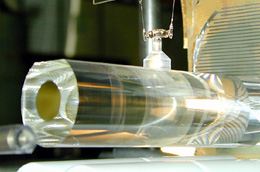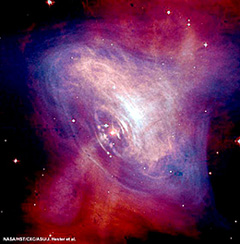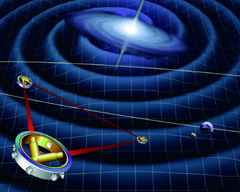Glasgow's Institute for Gravitational Research, the UK centre for experimental gravitational wave detection, has a world class reputation, and is a major collaborator on several large global projects ( GEO 600, LIGO and LISA). The IGR has been a world leader in the field of gravitational wave detection since its inception. It continues to innovate and invent with the aim of creating a viable global detection network of kilometre scale laser interferometers, capable of probing the emergent field of gravitational astronomy and opening a new window on the cosmos.
Projects
The IGR collaborates in the following projects:
Research
A broad range of topics are researched:
|
Interferometry: A full-scale prototype interferometer is housed in the institute, enabling the development of novel optical techniques, study of radiation pressure and quantum noise, and the direct measurement of thermal noise effects. These studies will help influence the evolution of possible next generation detectors, such as upgrades to LIGO and GEO 600 (shown below). |
 GEO 600 detector, near Hannover, Germany |
|
Materials Research: High purity silicon, sapphire and fused silica samples are currently used, or proposed, as substrates for the interferometer mirrors. Their material properties are investigated, at both room and cryogenic temperatures, enabling the characterisation and reduction of their sensitivity-limiting noise contribution. |
 Sapphire sample - for study as a possible mirror substrate material in future gravitational wave detectors |
|
Data Analysis: With first generation interferometers at or approaching design sensitivity, meaningful astrophysical interpretation of the data is crucial. We have developed techniques to search for signals from known pulsars, and unique Monte-Carlo methods for exploring the dauntingly large parameter space. |
|
 Crab nebula/pulsar in optical and X-ray light: NASA, J. Huster et al |
|
Space-based interferometry: The space-based LISA detector, and its precursor mission, LISA Pathfinder, require high precision optics capable of withstanding the rigours of space. The IGR has developed a monolithic optical bench and specialised bonding techniques for LISA Pathfinder, and will be constructing the flight model. |
|
 Artist's impression of the space-based gravitational wave detector LISA |